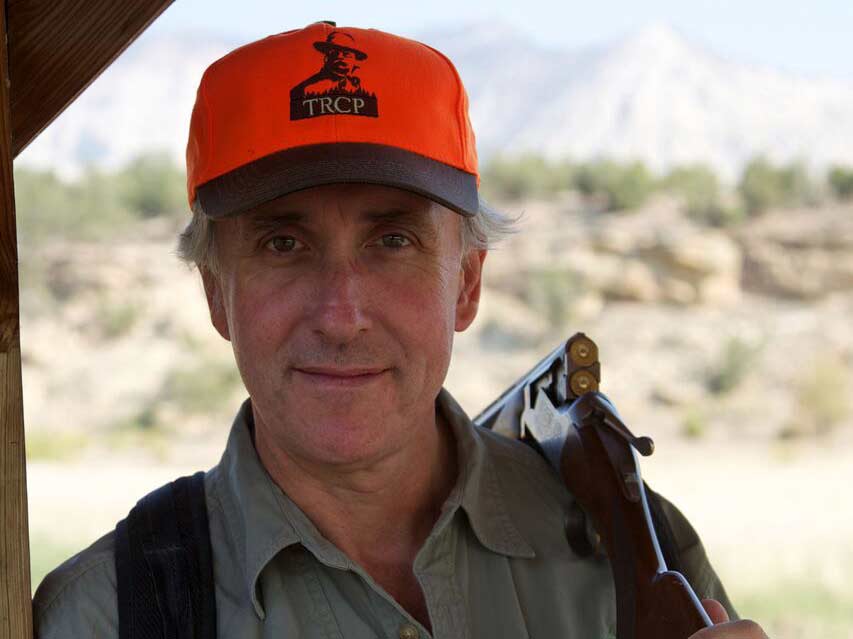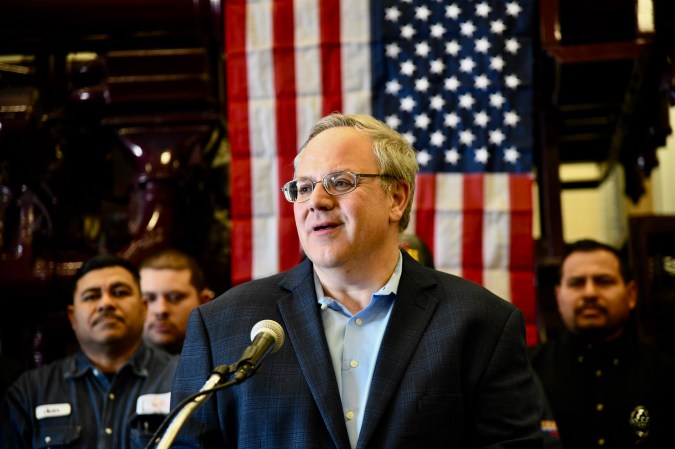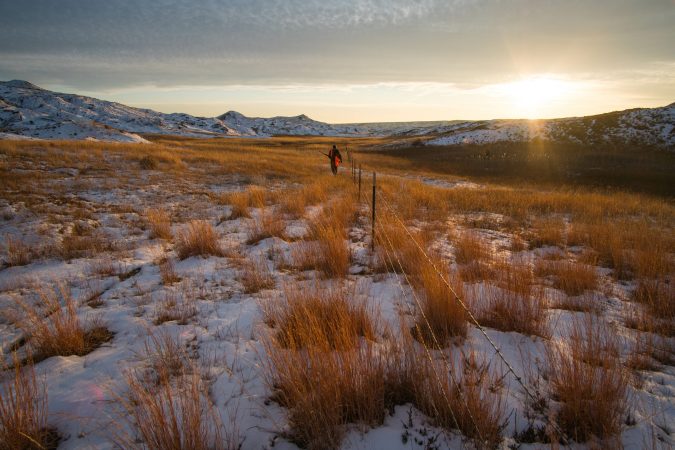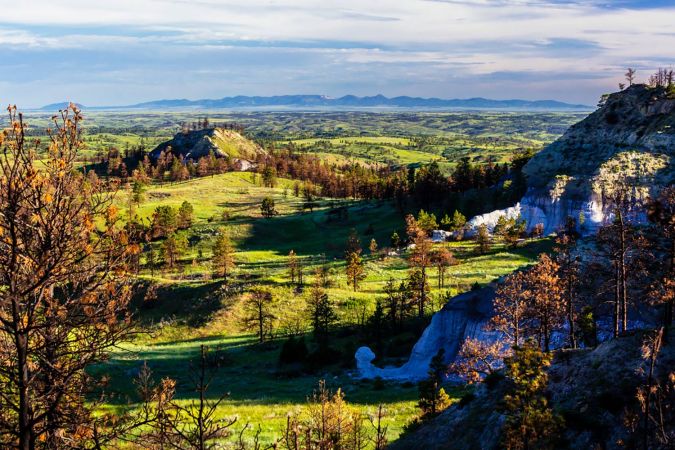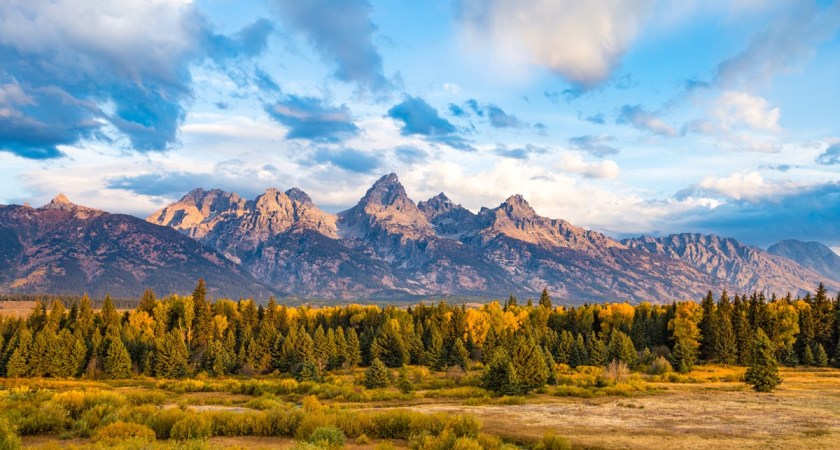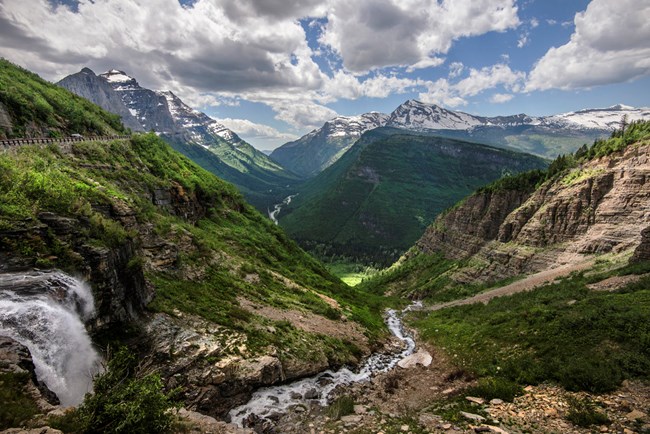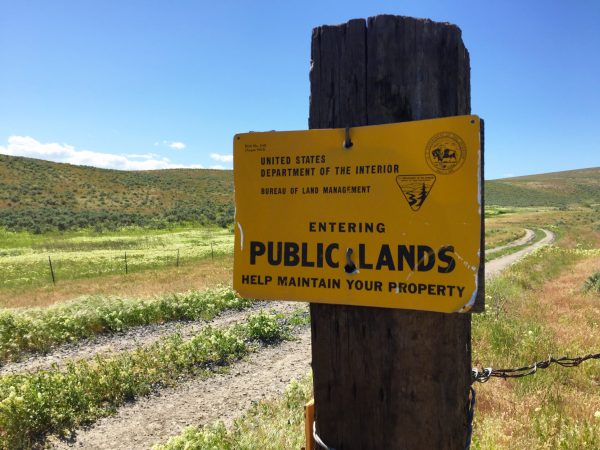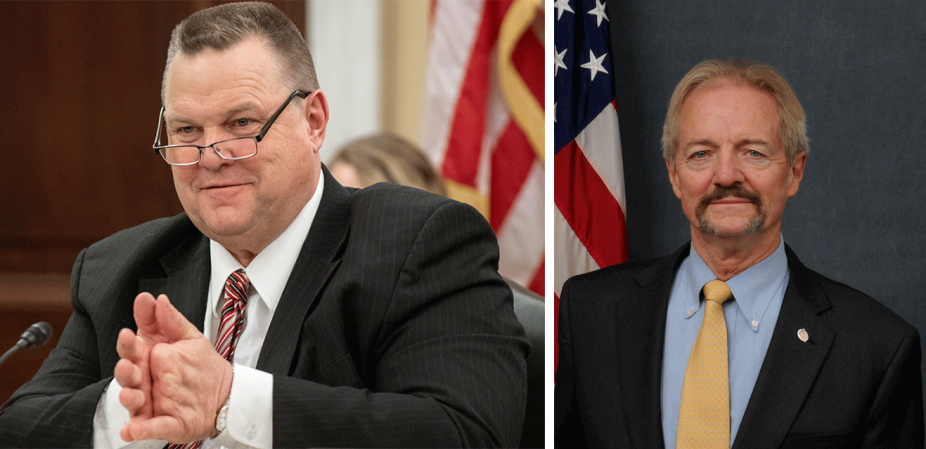At the 2019 Theodore Roosevelt Conservation Partnership (TRCP) Western Media Summit, we heard from experts on subjects ranging from wildlife migration to salmon fisheries to hunter access. Outdoor Life also had a chance to sit down with TRCP president and CEO, Whit Fosburgh to discuss the latest changes to the Department of the Interior (DOI), Moving the BLM to Colorado, and the new Secretary of the Interior, David Bernhardt.
The TRCP is an organization that works with over 60 partner groups—including organizations such as Backcountry Hunters and Anglers, the National Wild Turkey Federation, and Trout Unlimited—to advocate on behalf of hunters, anglers, and conservationists to our leaders in Washington D.C. Fosburgh joined the TRCP in 2010 and serves as a direct line to policy makers in Washington on issues relating to public lands and waters and public land access for all Americans. Here is a copy of our conversation:
Q: In regards to the DOI and the Trump Administration, what are some things that TRCP is most concerned about? And, what are some policies or actions that TRCP supports?
A: Let me start in the reverse and talk about the things we support. One is access, and I think that they have made a real concerted effort to streamline a bunch of the regulations, especially in the refuge system, to make it easier for access. They have done a secretarial order which basically clarifies land disposal, which they have to look at by law, on some BLM lands. But now, access is part of the criteria that they have to look at, and that’s something we’ve been advocating for a long time. I give them a lot of credit for that. So, I think they’ve been good on access and they’ve been pretty good on migration.
Zinke was the one who initially did the migration corridor secretarial order and I think there was a ton of benefit to that. I think it’s a no brainer—you can conserve relatively small parcels of land that are narrow, that make a huge difference ecologically for charismatic megafauna, and you have multiple jurisdictions, state, feds, private, different federal agencies, and transportation departments, so it’s a good way to try and make government work. So, I think that was a great issue to take on.
My concern is when you try to have your cake and eat it too. When you try to be good for conservation and be good for access yet open up everything for development, and we are seeing that with the migration corridors. They’ve asked the states to nominate, each state, three of their top migration corridors that they’re giving priority for conservation, and the states did that. If you look at Wyoming for example, the most iconic migration corridor in that state is the Red Desert to Hoback mule deer migration which they’ve studied extensively—and its very cool, they know right where the deer move, they know how they respond to development, and that was one that the state had already designated as an important, critical wildlife conservation corridor, so they nominated it to the interior.
Then, within a year of being nominated to the Interior for priority for conservation, the Interior had proposed 90 leases, oil and gas leases, in the corridor. We got the state to ask for more than half of those to be differed, and they were, so yes the Interior differed a bunch of leases because the state asked them to, but if we’re serious about conservation, let’s not lease those small areas that we know are ecologically most important because what you’re really doing is making the state be the bad guy. You’re making the state come out and say to industry: ‘No, we’re not going to let you do that there, we want those areas withdrawn.’ So, then the federal administration can go to industry and say: ‘We’re your friend,’ but then also run around and tout the migration corridors. So, I just think there is a little bit of a double talk going on. And, again, I don’t blame Bernhardt personally for this stuff, because this is coming from the White House. They want to show that they aren’t blocking any development, anywhere. And let’s face it, not all development makes sense, especially for fish and wildlife.
Q: Do you think that they are doing this to present themselves well, knowing that the states are going to shut that down?
A: Yes, they know that the state wants an area withdrawn and knows it’s important, and the state will ask for that, and then the state will be the bad guy. I just think that it’s somewhat disingenuous to do that. There are times when new development in certain areas does not make sense and the federal government ought to say to industry: ‘No, we’re not going to let you do it here, or if we are going to let you do it here, we’re going to have very severe rules about how we do it,’ but even that they’ve kicked to the states. They’ve claimed that they don’t have the authority to require compensatory mitigation, mitigation on public lands, but the states can require that.
So again, what they’ve done is kicked responsibility of being the bad guy to industry to the states and away from the feds. That’s the part that concerns me, the development above all else mindset in so many of these places. But I do think that a lot of that is coming from the white house and not coming from Bernhardt because I do not think Bernhardt is an ideologue with this stuff, I think Bernhardt understands what the laws of the Department of the Interior are, he cares about those, he hunts and fishes himself, he understands the importance of this stuff, and he also understands that multiple-use means making trade-offs on both sides, for industry as well as for conservation sometimes.
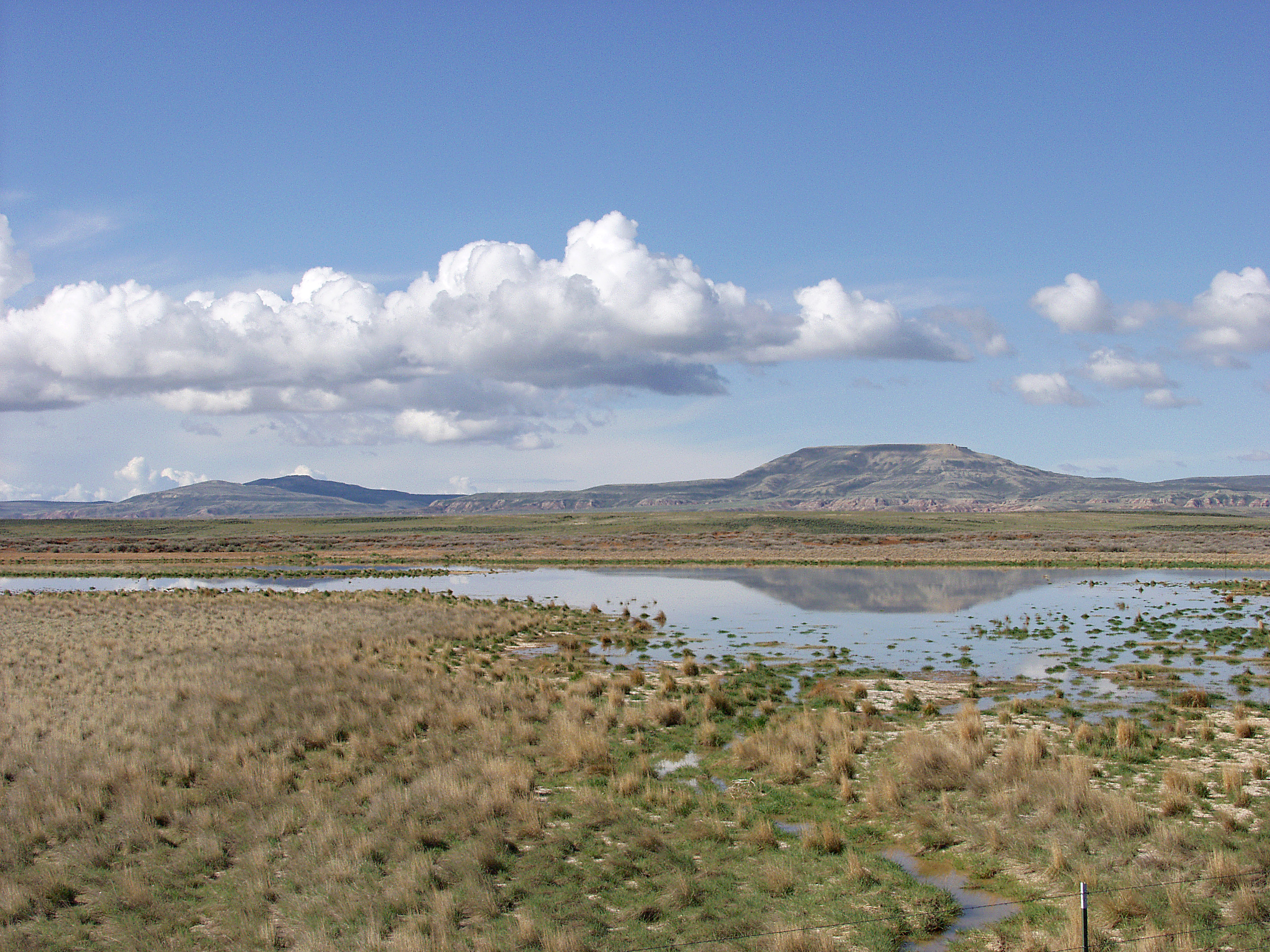
Q: Secretary Bernhardt basically makes the case that he’s a true multiple-use guy. BLM requires multiple-use, and his administration isn’t going to be wildlife dominant or energy dominant, but balanced. What’s your perspective on that based on the policies and appointments you’ve seen so far?
A: I think that’s absolutely right, and I think that you will not see David Bernhardt talk about energy dominance the way that Ryan Zinke did because I think that Bernhardt understands that they do have a requirement by law to balance these various uses. One is not supposed to dominate over another. The issue becomes how that’s put into place on the ground, and I used those examples of leasing and migration corridors. But I do think that Bernhardt certainly understands and appreciates the whole multiple-use mandate.
Q: Secretary Bernhardt says the President understands that sportsmen are key to wildlife conservation. He says that any time the President mentions energy, he also mentions conservation stewardship. Do you think that the President’s administration is looking out for the American sportsman?
A: I think there is a difference between the people like David Bernhardt and the President in some cases. For example, you have the President personally intervening to make the Pebble Mine in Alaska move forward, to eliminate restrictions on some logging in the Tongass—things that don’t make sense for sportsmen. I honestly don’t think that the President really understands or cares that much about what sportsmen think. I think that David Bernhardt does. I hope that as Bernhardt stays there, he will be able to speak reason to the President and everybody else that these are important issues and here’s why, and places like the Pebble Mine in Alaska are not worth the risk. There are good places to develop, and there are not good places to develop, and we have to have some balance.
Q: So you feel that he could be a counterbalance to some of these things that are happening?
Maybe, I think that’s optimistic, I mean, we’ll see. We certainly hope that’s the case, but he doesn’t come into that position as Interior Secretary with the same sort of gravitas that somebody like Steve Mnuchin or some of the other cabinet secretaries who came from Wall Street who were captains of industry and sort of peers of Trump. David Bernhardt is a lawyer and a career administration and agency guy, and I think that the President, to his credit, recognized that he was a good manager, he was a solid soldier to run the agency, but I have no idea what influence he has over the President.
Q: Even with his past in oil and gas, you think he’s more on the side of his legal responsibilities?
A: I suspect he was a very good lawyer and I know that he certainly preaches—nothing I’ve seen would make me think otherwise—that he understands what the law is. And if Congress wants to change the law and tell him that he can require mitigation, he’d be happy to do it. But if he does not feel that the law directs him to do something or his bosses tell him that they don’t want a certain outcome, he will figure out a way to use the law to move that outcome forward. But, you’re not going to see him do something that’s illegal or see him recommend something that’s illegal because he’s a smart guy and he appreciates and understands the authorities that the agencies have.
Q: Is the TRCP concerned about the William Perry Pendley becoming the acting head of BLM?
A: Yes. I don’t know him personally, and I will get to know him over time, but his history has been a hardcore advocate of getting rid of public lands, of non-multiple-use on public lands, where things like grazing and mining have priority. So, the notion that he is in charge of that agency is disconcerting. That said, by law, he can only sit there for six months—acting people have to rotate in and out—and I’m going to trust what Dave Bernhardt has told me of what their priorities are going to be and what they are going to do. And I will hope that Pendley also has that same attitude—that he’s going to follow the orders from his boss.
Q: Do you think that he could do damage in those six months?
He could do some damage, but I mean, what’s disconcerting is that you have him, and you have Karen Budd-Falen in there, who was the Bundy’s lawyer at one time. You have this sort of cast of characters that really represents the worst in terms of public land abusers, and that’s disconcerting. But, again, Bernhardt makes the decisions, and he’s ultimately responsible. If they start doing stuff like that, we’re going to hold Bernhardt responsible.
Q: Secretary Bernhardt puts a lot of emphasis on the maintenance backlogs. In fact, he said the reason why he did not request acquisition money for LWCF was because he first wanted to fund a program to fix backlog issues on National Parks, refuges, and BLM. What is TRCPs perspective on that? Does it have to be: Fix the backlog issue first, then fund LWCF?
A: It’s not an either-or situation. Dave Bernhardt does not make his own budget decisions; those come from the OMB and the White House. I understand what he has said, and, yes, we need to fix the backlog, but I think that one, the backlog is a fault of Congress systematically starving the agencies for decades now, then claiming: ‘Golly, we can’t fund the LWCF because we have this maintenance backlog’—which is completely disingenuous, and I think that most people see right through that sort of argument. We have a definite maintenance backlog issue, which we need to address, but it shouldn’t come out of the LWCF. In a lot of places, LWCF will actually reduce the cost of management because it consolidates holdings. I think that’s one thing that folks don’t understand. And Second, it helps drive the recreation economy. LWCF has funded projects in almost every county and every state in this country. 40 percent of it is for land acquisition, another 40 percent is for state parks, another 20 percent is discretionary based on what Congress wants.
So the notion that it’s just out there being used to snap up federal lands is wrong and everybody knows that it’s wrong. Plus, you look at places like the Adirondack Mountains in New York State, which is incredibly popular, and in fact, it would be great to have more access up there. When Finch Pruyn, the timber company, decided they wanted to get out of the land holding business and put their lands up for sale, it was LWCF funds that paid for those to become public so we could all go hunt and fish on those lands. That is good for the economy in the Adirondacks, and it can also be logged, so that helps the logging economy as well. So again, it’s disingenuous to say that LWCF is locking up lands, it’s not.
Q: Access to public land is important, but that public land also has to have quality habitat right? Talk a little bit about TRCP’s perspective on that. Is there more to public land than simply being able to access it?
A: Absolutely, there has to be access, and there has to be opportunity. It’s important to be able to get onto those lands and enjoy them, but it doesn’t do any good to get on land that’s been industrialized and has no game left. It doesn’t do any good to get on a body of water that has a massive algal bloom that has no fish. That’s why you can’t just be for access and not be for habitat. You have to also be for making sure that we have robust big game migrations, clean water, healthy habitats, connected habitats—because that is as much of an aspect of getting out there and enjoying nature as the ability to get on a stream or get into the backcountry.
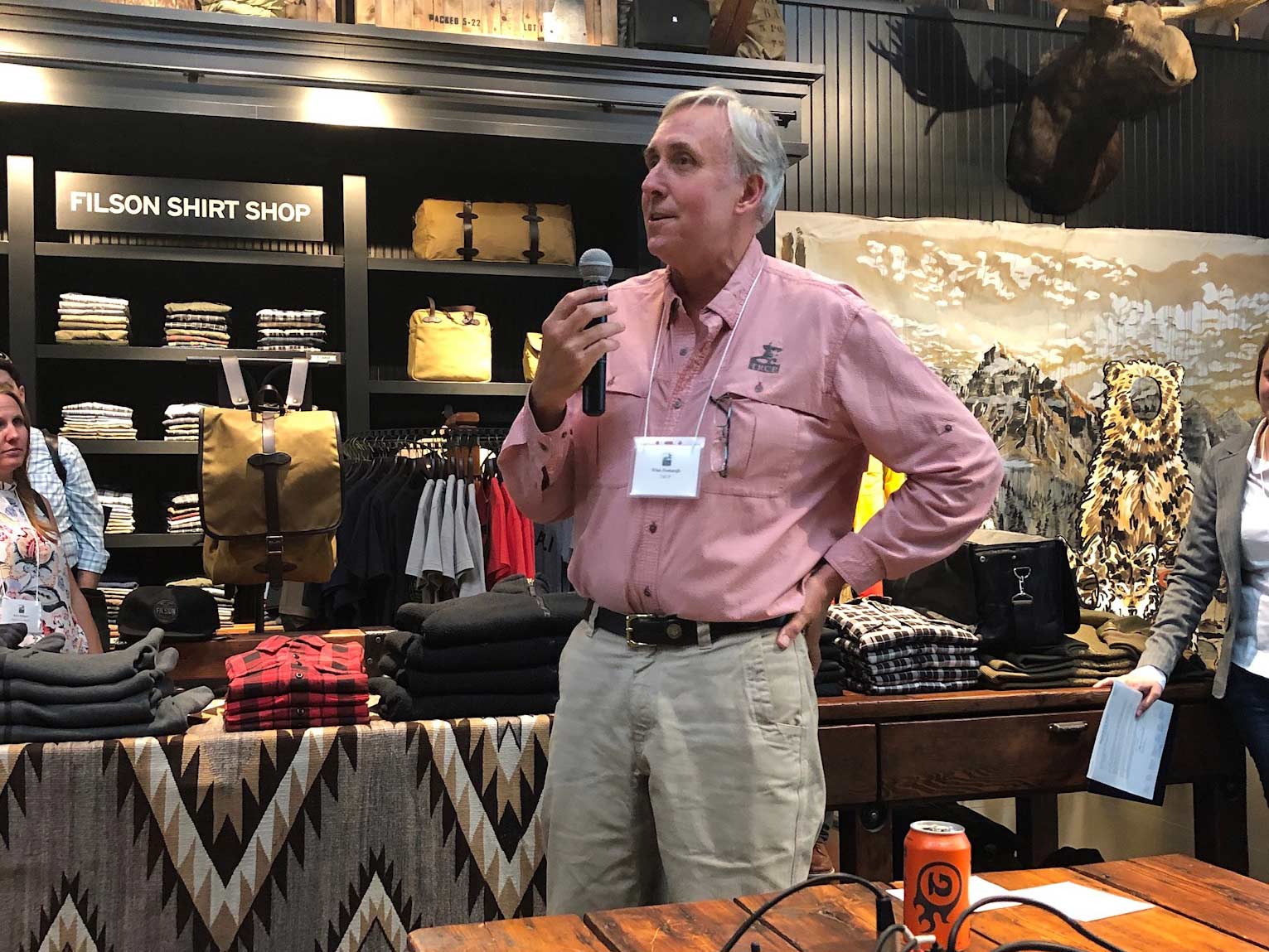
Q: What do you think about the BLM move to Colorado? Do you feel that is going to affect the way that TRCP communicates with them in Washington?
A: We don’t really know, I just think that it’s kind of silly to move 90 people or so out there. I think the bigger story is, there are a lot of good people, not only in the BLM and the Interior but in the Forest Service and the USDA that are being shipped out to these regional offices against their will, really as a way to make good people quit and to sort of shrink the government. We have more concerns over that strategy than we do about the BLM being in Grand Junction per se. BLM is already sort of the weak stepchild of all the federal agencies. It’s the most poorly funded, it’s the most poorly respected, and being out of sight is not going to help it in terms of being relevant in the budget and being relevant in decisions in Washington, so I don’t think it’s a good idea. We’ve weighed in and made it pretty clear that we don’t think it’s a good idea. It’s not the end of the world.
Q: You think that it may have been a strategic move?
A: I think that it’s a lot of rhetoric. I think it sounds good that, ‘we’re going to put the agency back where the land is,’ but that’s just rhetoric. Some guy in Nevada is going to get as much face time with somebody in Grand Junction as they are going to get with somebody in D.C. We all have phones, we have the internet, you don’t have to walk into the headquarters of the agency to make a point. It makes good politics and it makes good sound bites, but I don’t think it necessarily makes good practice.
Q: Do you think that a lot of these big dramatic moves that we’re seeing are mostly posturing to people’s own political parties and constituencies?
A: Yes, I think it’s largely posturing and politics and just thinking about things as a sound bite on a stump someplace.
Q: Bernhardt states that acreage for oil and gas leases is lower than at any time since 1985. Do you think that it’s just about acreage or is there a bigger picture?
A: I don’t think that it’s just about acreage. There are some areas that are perfectly suitable for oil and gas that are not critical for fish and wildlife. There are others that are biologically rich and incredibly sensitive so acreage doesn’t tell the whole story. It’s where you’re doing it and how you’re doing it, and I think that matters far more than the blanket number makers that are put out for this.
Q: Do you feel that a better version of multiple-use in terms of mineral extraction and oil and gas is strategically locating that stuff?
A: I think that it’s planning and I think that one of the things that I really appreciate they did under the Obama administration—especially with Ken Salazar when he was Secretary of the Interior—was they put in place something called master lease planning. Which meant that before you go into an area and lease it, you’re going to do some planning about where you’re going to have oil and gas, where you’re going to have pipelines, where you’re going to have roads, and where you’re going to have protected areas—so you’re making those decisions before you go in and lease those areas and not afterward when somebody sues you or files a protest or challenges something.
I just think that’s a much smarter way of doing development, to look at big areas one time and think strategically with industry, with conservation groups, with the environmentalists, with the ranching community, and really think about how you’re going to develop that area or not. They threw that right out the window in the first weeks of this administration. Again, I think that things like that make good sound bites: ‘if Obama did it, it had to be a bad idea,’ but in reality, it’s not a good way to run a business.
